- Administrator
- Albums and Singles
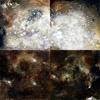 Although not overly prolific in his output, Andrew Moon has added another installment to Utech Records' URSK series which fits in to the ethos that the project has established: a disc of dark, ominous drone with a slight edge of noise. Considering there have been contributions from such scene titans as Skullflower and Final, RST holds their own, and is idiosyncratic enough to stand out among the throngs of guitar drone projects.
Although not overly prolific in his output, Andrew Moon has added another installment to Utech Records' URSK series which fits in to the ethos that the project has established: a disc of dark, ominous drone with a slight edge of noise. Considering there have been contributions from such scene titans as Skullflower and Final, RST holds their own, and is idiosyncratic enough to stand out among the throngs of guitar drone projects.
The opening of "Radiant" is all buzzing amplifier sustain, deep guitar tones, and a healthy mix of noise that—even though it is heavily in drone territory—feels more ambient than metallic. The longer "Constellation Drive," on the other hand, is steeped more in darkness and mystery, the harsher elements being more of a punctuation rather than a focus, with hints of chiming guitar that is consistent with modern day drone metal, but also has the influence of 1990s dark ambient and isolationist works that were the "next big thing" that never happened.
The other near-ten minute track, "When Fire Itself Came To Be Understood As A Process," feels similar with its bleakness built on digital distortion, menacing scrapes and cuts, and dive-bomb like guitar tones. It is lengthy, yet dynamic enough so it never becomes stale. The black metal influenced "Eternal City Ruins" and "Burnt Armour" are two of the more aggressive pieces, the latter EQ'd in such a way to max out the low and high frequencies, leaving little in the middle, and a lot of pain in the ears.
One of the high points of this disc for me is, though it definitely sounds murky and obscure, it's not a cliched "dark" album, but one that allows ambient and lighter sounds to shine through. The ending trilogy of tracks acts as the proverbial light at the end of the tunnel: the short "Planetfall" of simple guitar feedback has a warmth to it that the remaining tracks don't have, and to some extent feels like it could be a grimy piece of My Bloody Valentine style Jazzmaster abuse.
"Tin Sun II" is even brighter, the guitar noise channeled into angelic organ tones, with an overall warm and inviting feeling. The closing "Blue Smoke Sword" brings back some of the metallic elements, but in a softer mix, where it feels more misty than dark…its still somewhat ominous, but not in an evil way. No one will mistake it for Tangerine Dream, but it is a nice counterpoint to an otherwise monochromatic feeling.
Personally, I am very pleased at the fact that this disc is actually split up into individual tracks, rather than the traditional drone approach of 20+ minute pieces. In this context, it allows for much more diversity and variation from piece to piece, and that is one of the strengths of Tomorrow's Void: it manages to be simultaneously dark, but with lighter moments, with a nice balance of menace and inviting tones.
samples:
Read More
- Administrator
- Albums and Singles
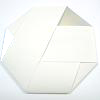 Up until this CD, SoiSong have been a shadowy presence, marked by rare concerts in Asia, special editions limited to one copy and password-protected Web sites. This confoundingly designed and packaged EP is the first above ground broadcast from the duo and, musically, things are as shadowy as their real life and online presence. Like any good collaboration between established artists, it is this combination of the familiar and unfamiliar that gives SoiSong part of its appeal.
Up until this CD, SoiSong have been a shadowy presence, marked by rare concerts in Asia, special editions limited to one copy and password-protected Web sites. This confoundingly designed and packaged EP is the first above ground broadcast from the duo and, musically, things are as shadowy as their real life and online presence. Like any good collaboration between established artists, it is this combination of the familiar and unfamiliar that gives SoiSong part of its appeal.
Amid the familiar tones that Pavlov and Christopherson wrench from their machines, other less recognizable elements emerge through the mix. The opening piece, “Kabuki-Chop,” is the one piece where the music’s heritage is most obvious. There is a slow build up where echoes of Musick to Play in the Dark and Pavlov’s more recent releases combine to make a narcotic buzz before the music explodes in a throbbing beat ridden climax. As good as “Kabuki-Chop” is, it is from “Soijin No Hi” onwards that the EP demonstrates what SoiSong are capable of. Many of the tracks have a music box quality about them; delicate piano refrains and bell-like sounds prove to be fragile as they are ripped apart in glitchy explosions. Grit, grain and lurching beats are infrequent but welcome additions to pieces that sometimes veer a shade too close to being airy-fairy new age for comfort.
The title of this EP is only known to those who own the CD (or those who search about online) as the title is a password that gives access to a private section of the SoiSong website. Within the password protected part of the site are different edits of the pieces (shorter than the CD versions), the track titles and artwork for each track. The different artworks for the pieces are not my cup of tea (aside from a painting by Brion Gysin which is nice but not mindblowing) but the physical packaging of the EP and the disc itself are both worth mentioning. The CD is octagonal so will not play on car stereos, Macs or any non-standard tray player (despite Christopherson’s long interest in Apple products). It arrives in a white criss-cross paper sleeve that completely seals in the CD. To open it, the packaging must be damaged, which goes against every rabid collector’s instincts. There is a way of opening it without doing too much damage (use a sharp knife to break the glue seal on one of the tucked in strips) but even doing it this way lead to some unsightly rips on my copy. Needless to say, folding it back up is a challenge.
One thing that was a bit of a kicker with this release was the price tag: £20 for an EP in “disposable packaging” might be putting some people off but considering how the pound sterling is bottoming out and how good the music is, my one recommendation is to raise a middle finger to the recession and indulge in this. On less frivolous terms, this EP is a taster for the forthcoming SoiSong album and considering Christopherson’s comments at Brainwaves (see the speech at the end of this video), the album is going to be something special. In the meantime, this EP certainly has enough depth to keep me going until the album comes out. The four pieces are a solid introduction to this new collaborative project, the spark of a fresh working relationship is bright here and with any luck will only get brighter.
samples:
Read More
- Administrator
- Albums and Singles
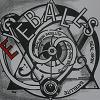 Richard Dawson's work under this pseudonym is not far from the classic '70s Kosmische drone groups, there are certainly elements of Tangerine Dream in the glittering pulses of Seal-Skin Satellite. However, there is a more modern sheen to the electronics; the precise and sharp sounds that make up the details of this one track album are a world away from Dawson’s influences. The modernity luckily does not mean that the music falls into the trap of being cold and machine-like. Throughout the half an hour or so that this CD lasts, the sounds produced by Dawson are more like an artist's impression of travelling through the solar system.
Richard Dawson's work under this pseudonym is not far from the classic '70s Kosmische drone groups, there are certainly elements of Tangerine Dream in the glittering pulses of Seal-Skin Satellite. However, there is a more modern sheen to the electronics; the precise and sharp sounds that make up the details of this one track album are a world away from Dawson’s influences. The modernity luckily does not mean that the music falls into the trap of being cold and machine-like. Throughout the half an hour or so that this CD lasts, the sounds produced by Dawson are more like an artist's impression of travelling through the solar system.
The background tones hum and pulse, moving so slow as to be almost static (and thus nearly perfect drones). Above the drone foundation is a glassy electronic chittering that is reminiscent of the period in Coil’s career where they returned to playing live, Seal-Skin Satellite would sit proudly next to Time Machines or Queens of the Circulating Library. The drone creates a huge space in the music, forcing the other sounds to the front of the mix where they stand out against the slowly shifting backdrop like stars in the night sky. The end result is very natural sounding electronic music that encapsulates all the best cosmic feelings that good electronic music usually captures.
Overall, Seal-Skin Satellite is just the right length at 30 minutes. Any longer would have been too much. As is, Dawson’s pacing is perfect with its long build-up and substantial climax. At the speed Seal-Skin Satellite moves, it is easy to forget how empty the start of the piece is once it gets going. Although it must be said that Dawson never lets the music become cluttered, there is always enough going on to make it interesting but not too much as to be overly-complicated (I guess it is a Goldilocks moment: just right).
One problem that I do have with Seal-Skin Satellite is that it is one of those highly limited CD-R type releases and will probably not reach anywhere near the number of people that it should. Perhaps a digital release is in order as this is a fine piece of drone work that deserves a wider audience.
samples:
Read More
- Administrator
- Albums and Singles
 The fifth solo album in Morgenstern's decade-long career marks a radical and somewhat bewildering departure from her previous releases. While her label claims she is "Berlin's queen of fragile and poetic electro-pop,"—and goes on to list a bunch of electronic acts she has done work with or for—nearly all electronics have been jettisoned from their central position and replaced with anachronistic piano-based rock.
The fifth solo album in Morgenstern's decade-long career marks a radical and somewhat bewildering departure from her previous releases. While her label claims she is "Berlin's queen of fragile and poetic electro-pop,"—and goes on to list a bunch of electronic acts she has done work with or for—nearly all electronics have been jettisoned from their central position and replaced with anachronistic piano-based rock.
That is certainly an odd strategy, in light of the fact that her previous album (2006’s The Grass is Always Greener) was probably her most popular and beloved and even featured something of a minor hit in "The Operator." However, her new material shows newfound depth and her sound is uniquely hers, so it is unlikely that she has become mentally unmoored or is acting on a contrarian impulse to alienate her fanbase.
BM attempts to thread together a number of seemingly conflicting and disparate influences—purportedly Brecht and Weil, definitely '80s rock, accidentally Tori Amos (presumably), and possibly Gong—and the result is a mixture of surprising successes, unevenness, and occasional forgettability that sounds like it came from an indeterminate previous decade.
Morgenstern has chosen some strong complementary collaborators for this new direction. Most obviously, Robert Wyatt, who wrote a song for the album, "Camouflage," and joins Barbara on a duet. However, it is the lesser-known musicians that provide many of the subtle touches that prevent the album from falling prey to flatness and sameness. Sven Janetzko’s guitar work provides some welcome adrenaline and propulsion to poppier moments like "Driving My Car," "Come to Berlin," and "Reich & Beruhmt," and his slide playing is invariably tasteful and well-placed. Julia Kent's cello work is also quite sympathetic and adds much color and depth to the sparse songs, especially when it is dissonant.
"Come to Berlin" is the album's single, which is appropriate, as it is much more muscular and immediate than anything else on the album. I am hesitant to say that it "rocks like a narcoleptic, Teutonic Pat Benatar," but that is exactly what it does and no other descriptive terms can really convey that very specific (and pleasing) characteristic.
"Meine Aufgabe" is also particularly striking (and probably my favorite track). It is built upon a charmingly lurching and simple organ pattern and is augmented by distant squealing and sliding strings. The chorus even (seamlessly) features a full choir. I would love to see her pursue this direction further. Despite its bold artistic departure, the bulk of the album feels very transitional: this is the only track that seems fully formed and unable to be improved upon. I am deeply curious to see where she goes from here.
My initial impression of the album was not entirely favorable, but subsequent listens have warmed me to it quite a bit. There is a lot to like—inspired and subtle touches loom in the background of nearly every song—however, I still find it to be frustratingly understated-. It seems like she will have a hard time luring new listeners into her wintry, elegant world. But I suspect that she doesn't care.
samples:
Read More
- Administrator
- Albums and Singles
 Roel Meelkop is best-known as one-third of the long-standing (and arguably seminal) electro-acoustic improvisation ensemble Kapotte Muziek. He is also a member of THU20 and Goem and has worked with Merzbow, Thurston Moore, Asmus Tietchens, and many other experimental luminaries. This, his first release for Norway's zang:records, is a foray into high-concept sound-collages composed largely of field recordings.
Roel Meelkop is best-known as one-third of the long-standing (and arguably seminal) electro-acoustic improvisation ensemble Kapotte Muziek. He is also a member of THU20 and Goem and has worked with Merzbow, Thurston Moore, Asmus Tietchens, and many other experimental luminaries. This, his first release for Norway's zang:records, is a foray into high-concept sound-collages composed largely of field recordings.
The central premise of An Ear For Numbers is the juxtaposition of field recordings of large "outside" spaces (such as the ocean) with small "inside" spaces (like the inside of Roel's mouth). Furthermore, Meelkop has "translated these qualities into music, within a context of numerics, relating to the length of the individual tracks." The role of numbers is not at all immediately apparent, unfortunately, and I suspect that even a gifted cryptographer would be hard-pressed to explain the significance of why the five-second-long "Track Four" seems to consist entirely of one click.
The source material is largely non-musical: most tracks are dominated by whines, clatters, pops, scapes, and flutters. This is not inherently a bad thing, but it is rare for them to layer intriguingly or create a lasting texture. Sounds abruptly appear and disappear and a unifying context is frustratingly infrequent. Rhythm is also an atypical component, but Meelkop does have a knack for echoey subterranean throbs and drones: they characterize all of the album's most compelling tracks.
I found the album to be ungratifyingly bloodless and academic as a whole but there were moments of genuine inspiration buried within. Track #2 contains a striking and unexpected interlude that sounds like a mournful string ensemble playing underwater. Built on a deep, stuttering bass line, track #8 builds and evolves to a subtle crescendo as it gradually intertwines with feedback (which has an enormously heightened impact because as a listener I am quite starved for repetition and structure by this point).
The problem lies primarily with the medium itself. First of all, listening to An Ear For Numbers without headphones is nearly identical to sitting in a room with a refrigerator and an open window. Secondly, this is not compelling without a visual component of some sort. Meelkop himself should be well-aware of this, as his parent group (Kapotte Muziek) conspicuously avoids studio recordings altogether. Watching musicians improvise collages from rocks and debris is an entirely different experience than sitting in the living room listening to the inside of Roel Meelkop's mouth.
samples
Read More
- Administrator
- Albums and Singles
 Put out by a small Japanese label that apparently gets no minor thrill off disseminating deliberately obscure reissues, this kooky collection of leftfield funk showcases an artist too unknown to have the honor of being forgotten, begging the obvious question of whether such a set even needs to exist.
Put out by a small Japanese label that apparently gets no minor thrill off disseminating deliberately obscure reissues, this kooky collection of leftfield funk showcases an artist too unknown to have the honor of being forgotten, begging the obvious question of whether such a set even needs to exist.
One perfunctory glance at this compilation's comically menacing cover—portraying an artificially red-eyed Wicked Witch a.k.a. Richard Simms decked out in a shiny black jumpsuit adorned with Rob Halford's spikes—might negatively bias potential listeners from the start. Yet this low-rent netherworld Rick James identity, possibly swiped from the front cover of Street Songs, should hardly faze those familiar with the notoriously over-the-top imagery, grandiose concepts, and labyrinthine mythologies associated with some of funk music's best known acts. The Parliament-Funkadelic universe alone constructed such disorienting and convoluted storylines and ludicrous characters that no amount of recreational drug use could ultimately explain (But oh God, what incredible music!). Taken in the context of these forebears along with Washington D.C. in the late '70s and early '80s, Simms' get-up makes enough sense, and matches the decidedly dark nature of his bizarre if mostly unremarkable tunes.
Admittedly and predictably, much of the material here is heavily derivative of Simms' more talented and successful funk contemporaries, as seen through a D.I.Y. lens. On the vocal version of "Electric War," he blurts out an almost passable Rick James impression suitable for karaoke but not for much else. Still, the instrumental take reveals that, given the opportunity, Wicked Witch wouldn't have necessarily minded usurping the mantle of the then-reigning Super Freak. Originally credited to Paradiagm, an ensemble in which Simms featured on bass and vocals, "Vera's Back" is the centerpiece here, a 12 minute doozy undeniably indebted to the P-Funk catalog, replete with a keyboard solo that nods towards the great Bernie Worrell.
Simms comes closest to discovering a sound of his own on 1983's "Erratic Behaviour," a standout of haunted machine music throbbing with the tenebrous tones and atmospheres of the first Suicide album. While the least funky of the bunch, its unique groove oozes a creepiness that most self-described goth acts of the last two-and-a-half years couldn't muster in their gloomiest nightmares. The track's original B-side, "X-Rated," nudges Wicked Witch back into the more recognizable confines of funk, yet still shines with outsider appeal. Had Simms chosen to continue along this murky path, there might have been more music worth mining for this set.
samples:
Read More
 Wasting little time, Diana Rogerson is back with another album of unhinged and gloomy psychedelica. Aided this time by Andrew Liles, this album shows a marked difference to her previous releases. While some of the pieces are surprisingly accessible and (dare I say it) musical, the harder edges of this album are made of a far different material than the scratchy creepiness of Chrystal Belle Scrodd. This impressive album sees Rogerson shed the soft cocoon of A Bad Diana and bear her claws for the first time in ages.
Wasting little time, Diana Rogerson is back with another album of unhinged and gloomy psychedelica. Aided this time by Andrew Liles, this album shows a marked difference to her previous releases. While some of the pieces are surprisingly accessible and (dare I say it) musical, the harder edges of this album are made of a far different material than the scratchy creepiness of Chrystal Belle Scrodd. This impressive album sees Rogerson shed the soft cocoon of A Bad Diana and bear her claws for the first time in ages.
- Administrator
- Albums and Singles
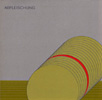 Since the mid-'60s, synthesizer and musique concrete experimentalist Asmus Tietchens has been an enduring symbol of artistically motivated musical work. This album, the 12th in an ongoing series of his works and the second in a four part series originally released on Hampster Records, sees Tietchens "recycling" previous pieces made between 1967 and 1970. Originally released in 1989, the album is intended more as a demonstration of the variety of techniques utilized than a presentation of new pieces culled from old works.
Since the mid-'60s, synthesizer and musique concrete experimentalist Asmus Tietchens has been an enduring symbol of artistically motivated musical work. This album, the 12th in an ongoing series of his works and the second in a four part series originally released on Hampster Records, sees Tietchens "recycling" previous pieces made between 1967 and 1970. Originally released in 1989, the album is intended more as a demonstration of the variety of techniques utilized than a presentation of new pieces culled from old works.
"Mineral 4" opens the disc with a synthesizer exploration that sounds like a ping pong game in a cavernous hallway. Its gestural punctuations are encapsulated in swathes of silence, giving the work a physicality rarely achieved with so few sonic resources. "Drahtmensch 1" follows it with a similarly percussive piece, albeit a more metallic one, sounding like some strange merger between a Karlheinz Stockhausen percussion piece and the industrial soundscapes of Nocturnal Emissions.
The droning crescendo of "Ultima Terra" is marked by its static lushness—as its volume becomes louder, its details reveal themselves, displaying a world of sound in itself. Later, "Modal 5" takes choral-like repetitions and meshes them with the echoing atmosphere present throughout the album. Odd synthesized lurches bound about behind the rich pulsing fore of the work.
"Ein Fleißiges Insekt 2" features well-like kerplunking of sounds beneath the kinetic scraping of insect-like movements. "Kryptophonie 2" presents an eerie world of glacial moments. Synthesizer sounds glide about behind mists of delicate reverberations and mechanical chugging rhythms. The less cohesive "Gesichter Von Gestern" incorporates radio broadcasts and space-like synth sounds as it quickly romps through a variety of moods in its brief minute.
In addition to the album's original twenty tracks this reissue provides two bonus tracks. "Kryptophonie 1" features loops which mesh in and out of phase with each other as they ebb and sway about, eventually evolving into some loping mythical creature all its own. "Zweite Sekunde" presents an exploration in rhythm as taps are bounced about the speakers and turned into whispered echoes of the original.
Abfleischung, while hardly the best demonstration of Tietchen's capabilities, does offer a fascinating glimpse into his working method. Each piece serves as its own distinct world, and it is the abundance of details within those that keep the work as rewarding as it is. Tietchens is a sonic sculptor in the truest sense, and here he is able to display the depth of his talents while providing a window into how he utilizes them.
samples:
Read More
- Administrator
- Albums and Singles
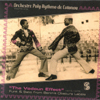 Germany's Analog Africa unleashes yet another amazing collection of long-lost African funk recordings. This, the follow-up to last year's uniformly beloved African Scream Contest, focuses entirely on Benin's staggeringly prolific (and largely unheard) Orchestre Poly-Rythmo de Cotonou.
Germany's Analog Africa unleashes yet another amazing collection of long-lost African funk recordings. This, the follow-up to last year's uniformly beloved African Scream Contest, focuses entirely on Benin's staggeringly prolific (and largely unheard) Orchestre Poly-Rythmo de Cotonou.
During the course of several trips to Benin, Analog Africa's tireless record-collector Samy Ben Redjeb compiled several hundred tracks recorded by Orchestre Poly-Rythmo de Cotonou between 1970-1983. This is the first of two expected compilations and focuses entirely on "secret" recordings that the band made on small labels while under an exclusive contract to Albarika Store. All of the tracks were originally issued in very limited pressings and only one has ever been released outside the band's home country. The music is uniformly raw and underproduced (in a good, visceral way), largely because the covert and budget-impaired nature of the releases necessitated that they be recorded in private homes with only one or two microphones.
It is difficult to pick a stand-out track, as they are nearly all uniformly solid. Nevertheless, I'm quite fond of "Dis Moi La Verité," despite the fact that it eschews any African percussion influence. This handicap is easily overcome by the tight and infectious bass line, and the call-and-response vocals are quite catchy. "Mi Homlan Dadalé" plays much more to the band's strength of wild and unusual percussion and is probably my favorite.
It is obvious why Redjeb decided to devote so much time and effort to making these recordings available, as the band has a rather unique sound and they are consistently excellent. There are many similarities to Senegal's Etoile de Dakar, especially the clean, simple guitar lines and and the Latin-tinged percussion. However, the Orchestre is much more bass-heavy and rhythmically complex (as well as quirky and varied). Or course, the occasional flourishes of endearingly clumsy and weird psychedelic organ are a large part of their charm too. Regrettably, the Orchestre lacks a frontman with the presence and star-power of Etoile's Youssou N'Dour, which may be at least partly to blame for their comparative obscurity. That said, the vocals certainly aren't bad, just not particularly charismatic or unique (and early N'Dour can be off-puttingly over-the-top sometimes anyway). In fact, a prominent vocalist might actually have been a liability for these guys, as it it is the groove that takes center stage, not the songwriting.
Yet another reason for the band's singular sound is that Benin is the birthplace of Vodun (or voodoo) and the band makes inspired and inventive use of its complex, ritualistic percussion. The band reference a number of traditional Beninese rhythms here, but they all invariably wind up incorporated into lively, propulsive grooves. Interestingly, one of the primary rhythms deployed here is Sakpata, which is dedicated to a deity known primarily for protecting people from smallpox. I do not currently have smallpox, so I was regrettably unable to test its effectiveness. Nevertheless, it is certainly refreshing for funk to take such a humaintarian and healthy turn (especially given the lengthy wake of unwanted pregancies and venereal diseases that American funk has presumably left behind it).
Redjeb seems to have preternatural and unerring good taste, as the two streaming mixes posted on his blog are no less impressive (and obscure). It is frustrating that releases are so slow to trickle out of his label, given the seemingly endless vein of material. Of course, I'm sure finding the recordings, sifting through them all, tracking down the bands, writing exhaustive liner notes, and securing the necessary rights are all very time-consuming and non-lucrative endeavors. Consequently, my impatience and gluttony is tempered by my deep appreciation for Redjeb's devotion and energy. I can't wait to hear what he releases next.
samples:
Read More
- Administrator
- Albums and Singles
 Wasting little time, Diana Rogerson is back with another album of unhinged and gloomy psychedelica. Aided this time by Andrew Liles, this album shows a marked difference to her previous releases. While some of the pieces are surprisingly accessible and (dare I say it) musical, the harder edges of this album are made of a far different material than the scratchy creepiness of Chrystal Belle Scrodd. This impressive album sees Rogerson shed the soft cocoon of A Bad Diana and bear her claws for the first time in ages.
Wasting little time, Diana Rogerson is back with another album of unhinged and gloomy psychedelica. Aided this time by Andrew Liles, this album shows a marked difference to her previous releases. While some of the pieces are surprisingly accessible and (dare I say it) musical, the harder edges of this album are made of a far different material than the scratchy creepiness of Chrystal Belle Scrodd. This impressive album sees Rogerson shed the soft cocoon of A Bad Diana and bear her claws for the first time in ages.
No Birds Do Sing is a much more raucous affair compared to 2007’s The Lights Are On But No-one’s Home. The music thumps hard and constantly sounds like it is going to implode under its own energy. Rogerson gives what is arguably the best vocal performance of her career. She completely lets loose, swinging between a sultry devil on “Can I Tempt You With All This?” and a screeching harpy on “Should the Prayer Wheel Turn.” This sometimes makes for a difficult listen as she give such a pained performance that, much like Diamanda Galás, even though the pieces are incredibly good, they are too draining to listen to as often as I would like. Referencing the title of her last album, when she utters “I’m so scared because I’m still not, I’m still not at home,” it gives me the chills.
Musically, Liles brings with him the eclecticism of his other collaborations (there are shades of Fini!, his album with Faust’s Jean-Hervé Peron on the rockier parts of this album). The almost funky drum beats and keyboards of “Can I Tempt You With All This?” and its later sister track stand out in contrast to the exotic rhythms and instrumentation of the other pieces. There seems to be a move away from the Nurse With Wound moods and sounds explored by Rogerson with her Chrystal Belle Scrodd and A Bad Diana albums (perhaps due to Steven Stapleton taking a backseat here, providing only “post production consultation” and artwork). This has resulted in a freakier sounding album than any other NWW-related release I have heard. The uneasy Middle Eastern “Ever Afflicted With” is haunting and hypnotic, creating an unsettling mood that is then exacerbated by the pulsing, tribal beat of “Ki Denga Pepo.” Rogerson’s cries are merged with those of a baby for a truly disturbing experience.
Rogerson and Liles have put together a remarkable album. No Birds Do Sing is difficult without being completely obtuse yet at times it is also conversely one of Rogerson’s and/or Liles’ most accessible albums. It pushes and pulls the listener around like a rag doll; just when I feel I am going to break the duo relent for a moment, allowing a breather to recover. It makes for an exciting listening experience.
samples:
Read More

